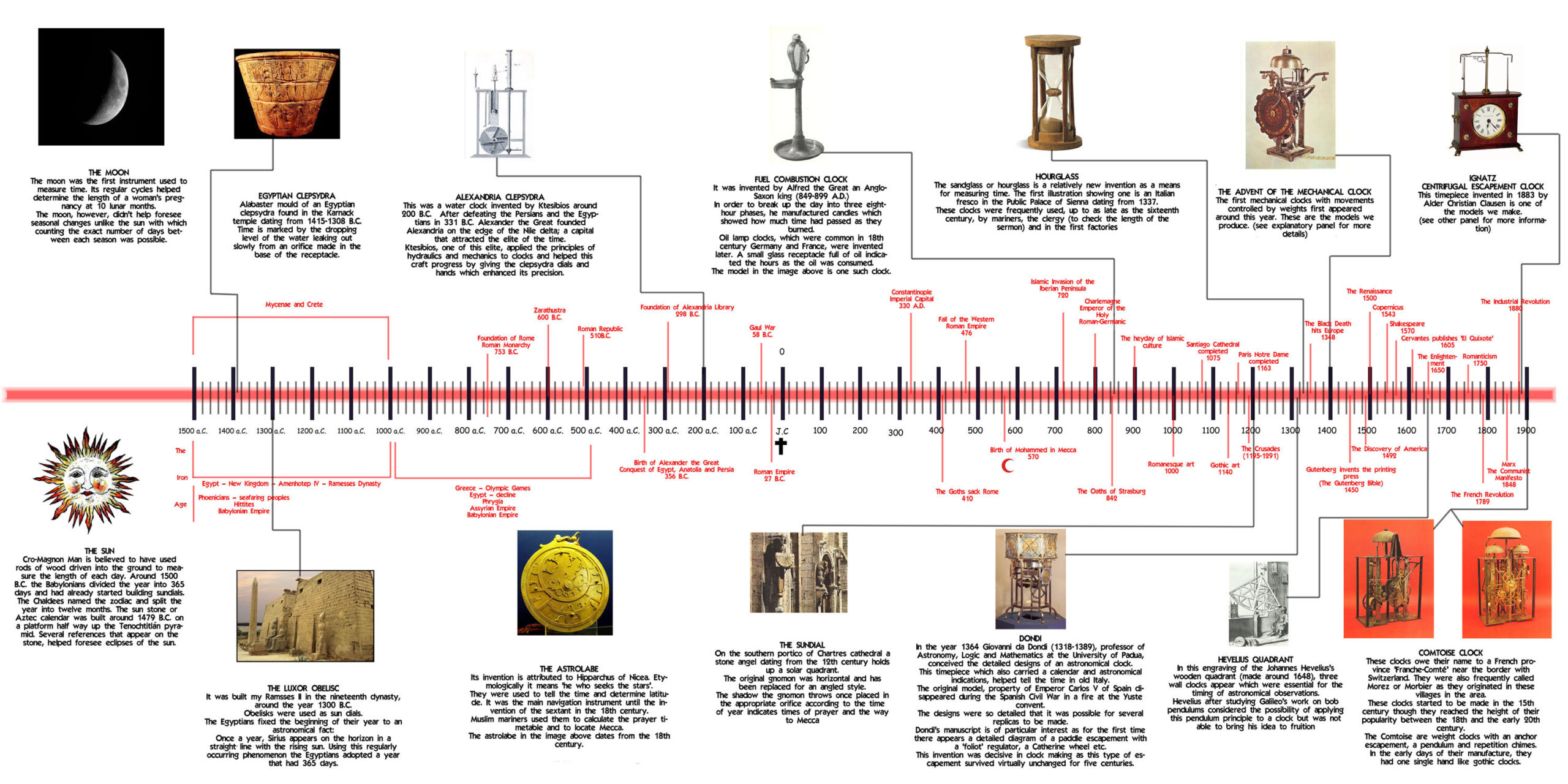Time is an entity without which human lives will come to an absolute stop, all our lives we have just been programmed to find a workable solution with respect to our time.
The inherent passage of time has been troubling us humans for eternity wherein prehistoric civilization recorded time with phases of Moon, nearly 30000 years ago. Their own reflections could only be expressed in time.
Measuring time, just naturally!
Various events changing the immediate human surroundings throughout the year inspired the primitive measurement of time: seasonal winds, torrential rains, river floods, blooming of flowers, falling of leaves, breeding or migration cycles of animals and birds.
It all began with measuring lengths of the day using Sundial with its shadows changing direction and length as the Sun swathes across the sky. With this broad understanding, observing a change in length of days at different times of the year became so easy.
However, it took us quite a while before we grasped the countable difference between ‘clock’ time and the one by the sundial, only to blame it on the planet’s elliptical orbit and inclined axis.
From the invention of various methods like archaeological Chinese oil lamps equating the level oil remaining in carefully-measured reservoir lamp with the passing of time, the candle clocks, water clocks like the Tower of Winds in Athens, to the commonly found sandglasses or the hour glasses and spring driven clocks.
History has it all.
The pendulum clock got its first adapters in Christiaan Huygens who found the “natural” period of oscillation way back in 1656 and made the first of this kind and the famous Galileo.
How the time gets measured currently in India and the world?
In the current set up, techniques have evolved to get the time displayed on our electronic devices like phones, sourced out of the atomic clocks placed and operated through the national institutions.
These are the products of Cesium atoms, accurate to nearly one by three hundred millionths of a second annually.
It works as electromagnetic waves are made to hit Cesium atoms collected inside a frame which absorb the incoming radiation and record a “quantum jump” i.e., transition to a different energy state, only upon absorbing waves of a definite frequency (the number of wave sequences per second).
With every wave cycle count, the clocks are able to measure the tiniest fractions of a second viz. 1/9,192,631,770 of a second, measuring and defining a ‘second’ as the duration of 9,192,631,770 cycles
1.39 billion of Indian population has synced its time module from the country’s National Physical Laboratory (NPL) holding abundant Cesium (Cs) atomic clocks as well as Hydrogen maser, with an ability to not lose or gain a second over a span of three lakh years.
However, time measurement has got an expected upgrade now. Made up of Strontium atoms carefully structured inside an optical lattice atomic clock that is designed not to gain or lose even a second in approximately 15 billion years, a time period more than the intended age of our Universe.
Without an accurate system of measurement of time, everything would have been impossible like Einstein’s general theory of relativity or the navigation systems we are dependent on.
Bend is Better: Need for better resolution
Believing the greatest physicists of our time, we can understand that time has no physical properties to be quantified, what we end up really measuring is time intervals.
These intervals correspond to events from one point to another, which sometimes turn hazy and can be uncertain i.e., one cannot, at times, be sure of when the preceding moment stopped existing and the succeeding one began.
“If you’re using a counter, you have to define zero. You start counting at some point,” a physicist explains.
Novel ways of making a legendary Time & Opportunity: Quantum Timestamping
However, a group of researchers have exploited this very uncertainty to find a new way of measuring time, using the wave nature exhibited by Rydberg atoms.
This is achieved when these atoms are shot with lasers (sometimes, second times) to push its electrons farther away from its nucleus being in high energy state.
The manner in which electrons distance themselves from nucleus is called their Rydberg state while the computational way of this characteristic is called their respective wave packet.
As these packets begin to linger in a ‘quantum pond’, these varying Rydberg wave packets meet others of their own and interference is caused, which is again of different and unique pattern of ripples made, subject to the amount of time it takes, hence, to be used as time stamps.
One of the Researcher explains: “The benefit of this is that you don’t have to start the clock – you just look at the interference structure and say ‘okay, it’s been 4 nanoseconds”.
In the experimented cases, the process involved helium atoms which were then excited using a laser pulse paired with short pulses of ultraviolet radiation.
These ‘so-called watches’ could resolve up to 81 picoseconds with only errors of within eight femtoseconds.
Further refinements in the quantum watch experiments can pave way for other atoms rather than just Helium, or record with different laser pulses possessing different energies, to elaborate the work on timestamps with an exquisite range of conditions.
It remains important to note that physicists have already attained greater amount of information around these electrons moving into their Rydberg states, while working on Quantum computers.


